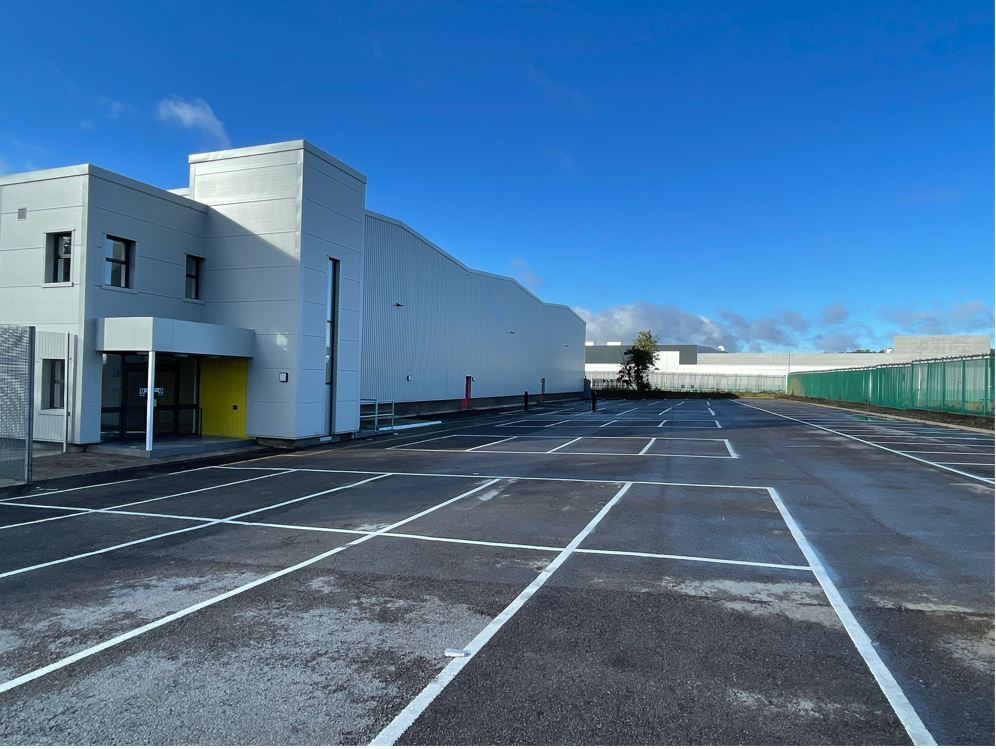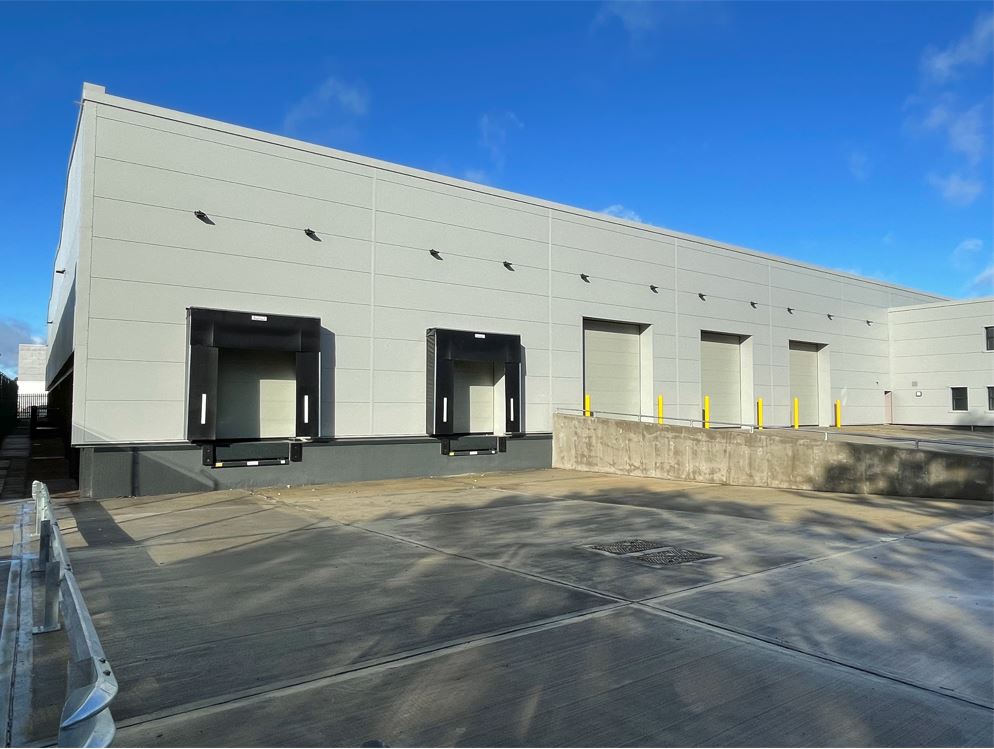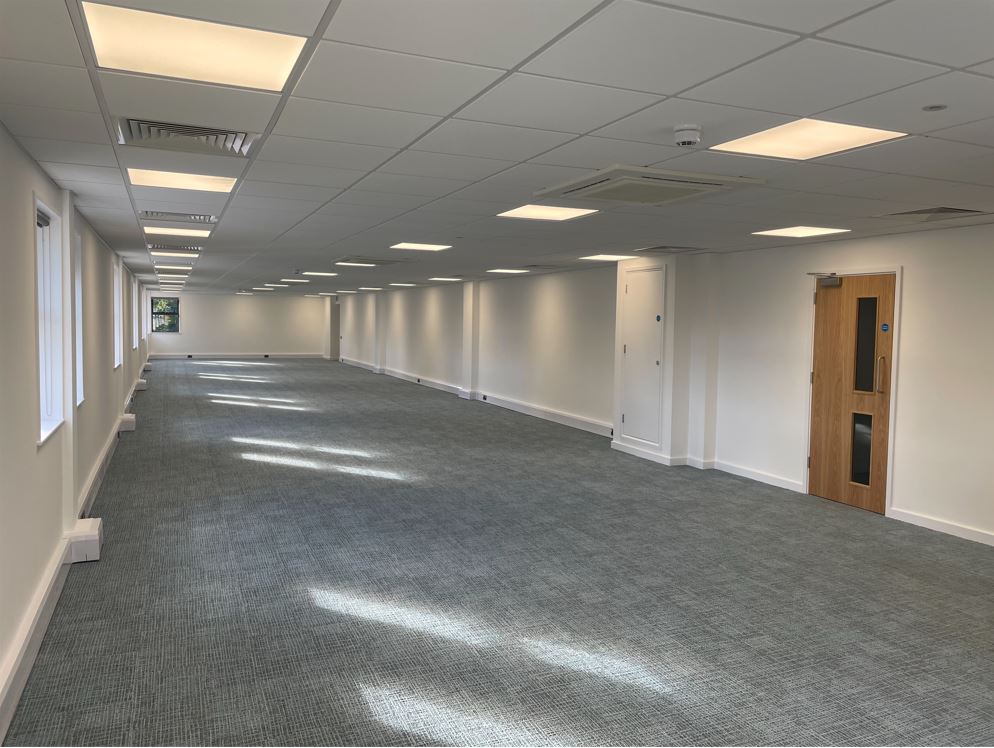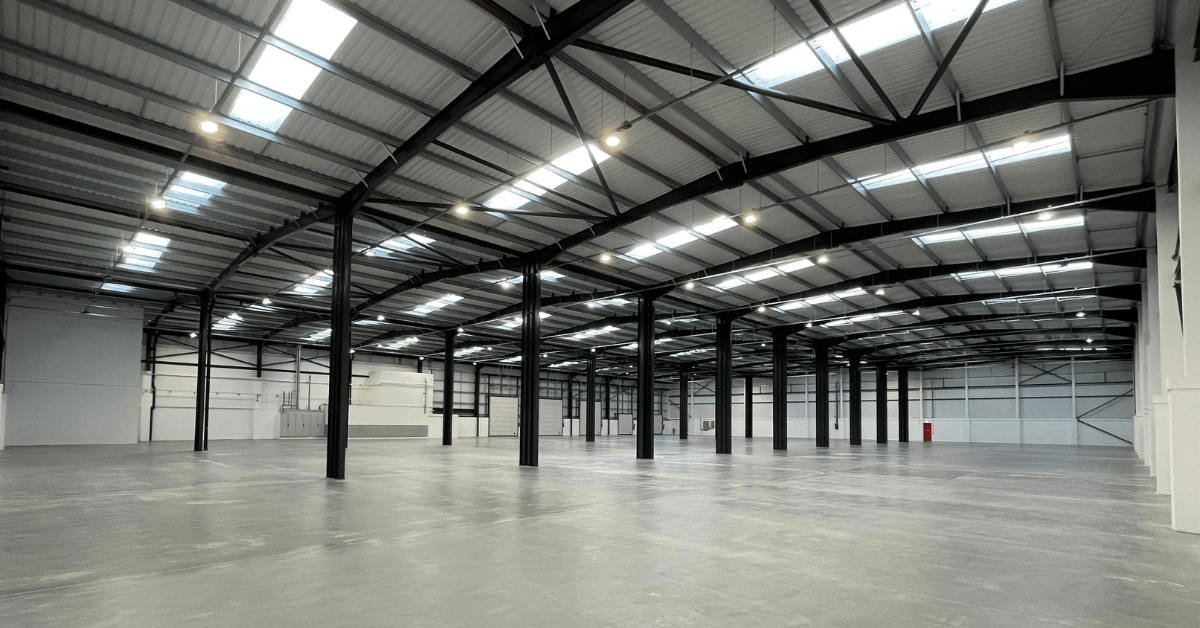Sustainable Warehouse Refurbishment
Client:
CBRE IM
Project Manager:
Vail Williams
Location:
Unit A Woolborough Lane, Crawley
Value:
£1m-£2.5m
Programme:
30 Weeks
BREEAM Rating:
Very Good
CCS Rating:
Excellent
Pexhurst were appointed to carry out refurbishment works to this 47,534 sq. ft warehouse in Woolborough Lane, Crawley.
The main aim of the project was to raise the clear height in the warehouse to increase its appeal to a wider range of tenants. This was to be achieved by reusing as much of the original building as possible to make this a more sustainable refurbishment which tied in with the goal of achieving a BREEAM very good rating.
The project involved stripping off the original asbestos roof and metal cladding, removing the existing structural steel rafters, extending the structural steel columns and reusing the original rafters to form the taller warehouse.
Pexhurst installed a new insulated composite roof and cladding. Two new dock levellers and 5 new insulated sectional door openings were created. The warehouse was then refitted with new lighting, power and aspirating fire alarm system. This also included new industrial screed and decorations throughout.
External works to the offices comprised of laying a new liquid plastic roof and overclad in a Mircorib Quadcore insulated panel with new aluminium windows. Further external improvements comprised of a new hardstanding and drainage, plus the installation of new ramps to suit the new dock leveller and drive through doors. Internally the offices were refitted with new services including a reception area, locker rooms and additional WC areas.
The initial problem Pexhurst had was opening up the structure to survey the existing steelwork sizes and connections to make the structural engineers' designs work. This was carried out manually by breaking out the concrete encasement around the structural steel with electric breakers.
There were a few surprises, but these were all overcome. The next major issue was the current industry problems with the supply of materials which forced us to quickly respecify materials at short notice to have a chance of maintaining the programme, whilst keeping to the BREEAM requirements.
We also had one of the wettest summers which hampered the sequential pouring of the concrete hardstanding bays. The pouring of the concrete hardstanding was achieved with patience, monitoring the weather reports and strategically allocating the days on which we could pour, along with careful planning of the sequence of bays to allow other trades to progress. The impact of these numerous factors were kept to a minimum through the hard work and determination showed by the team.













